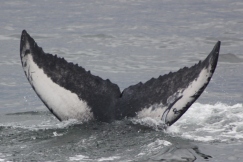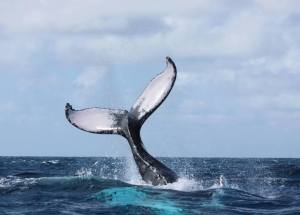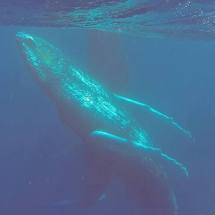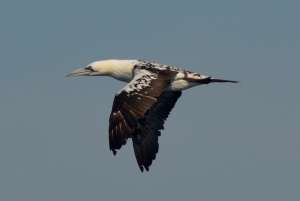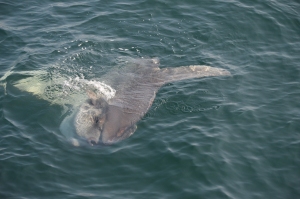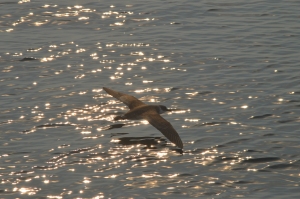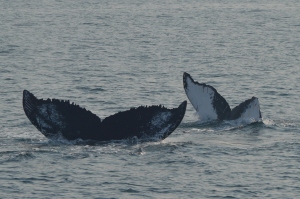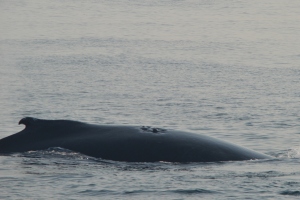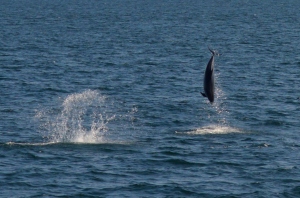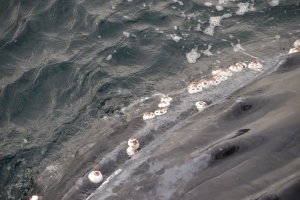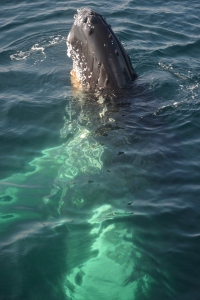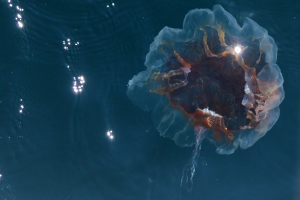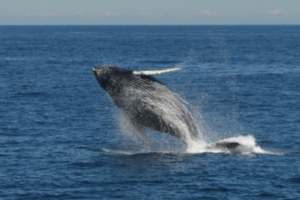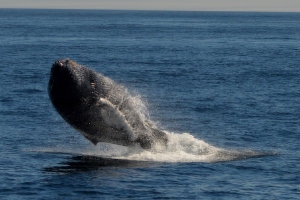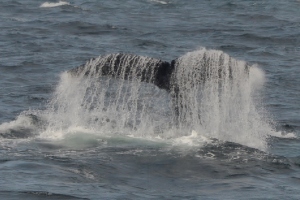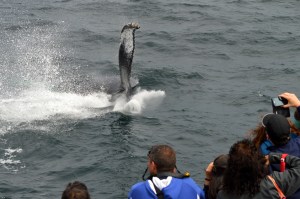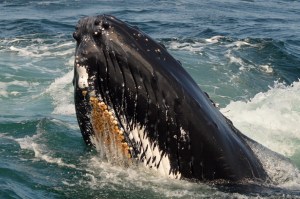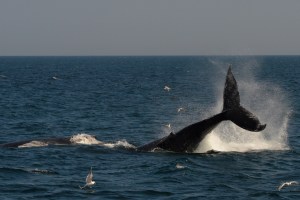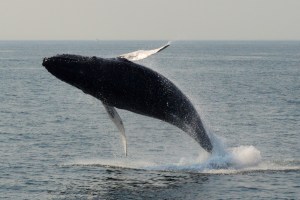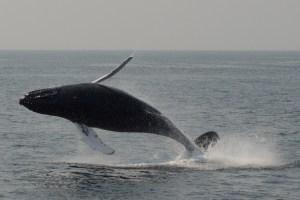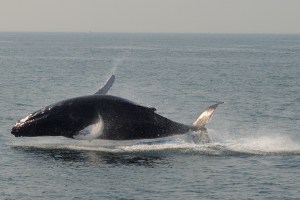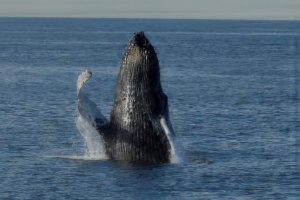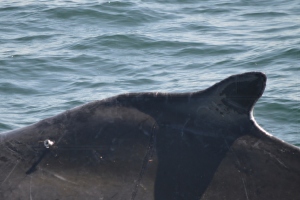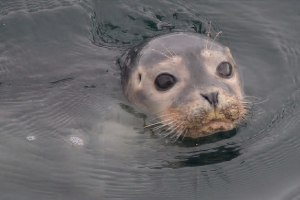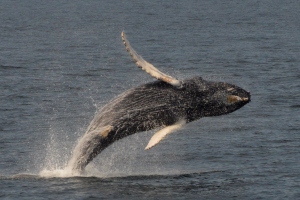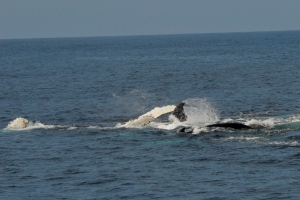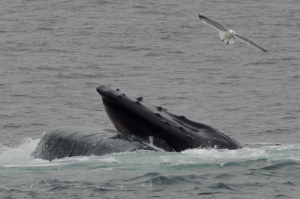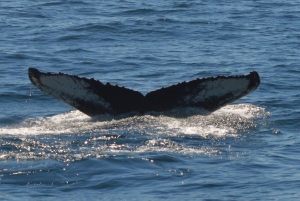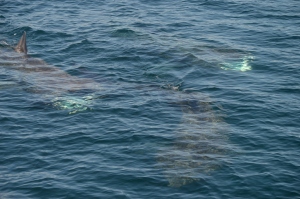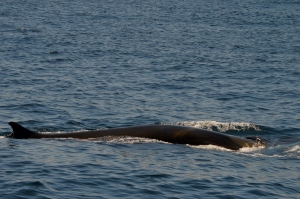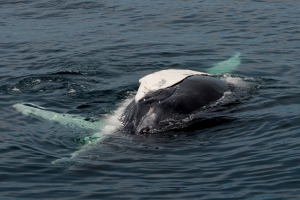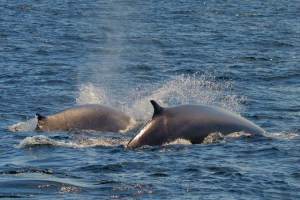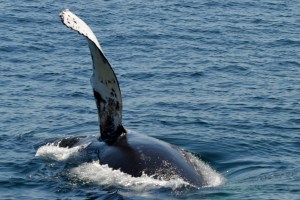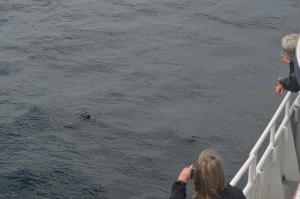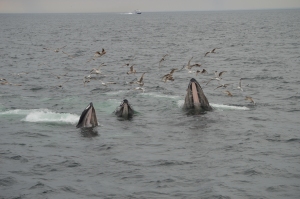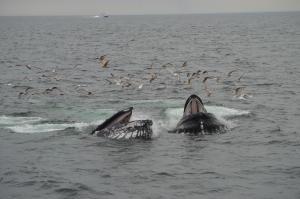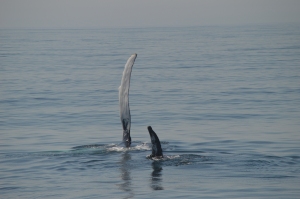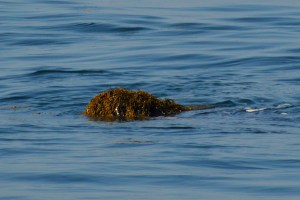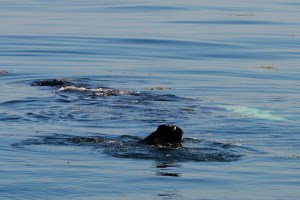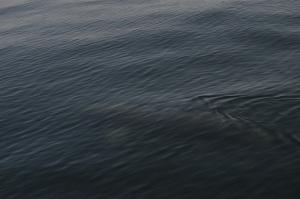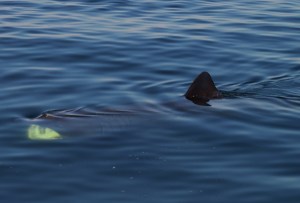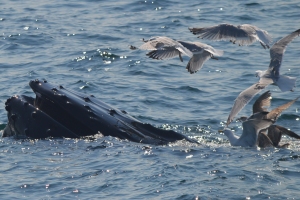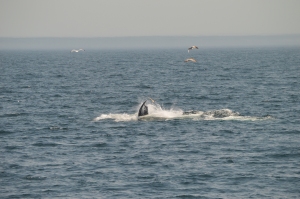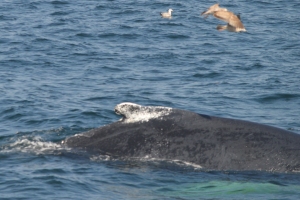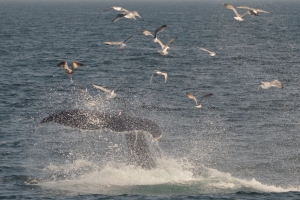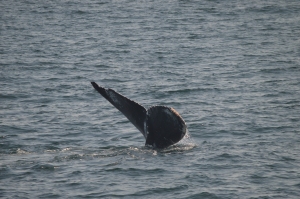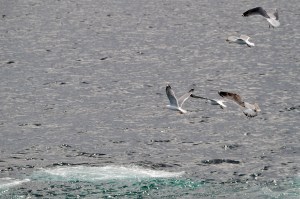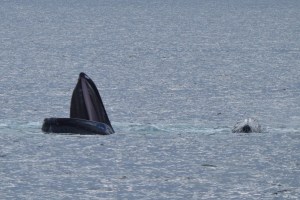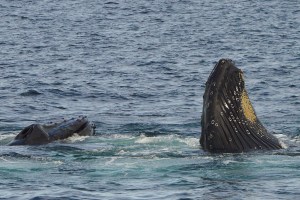Finally, we get to go whale watching!!!
There were so many whales on our first trip! We started with a little humpback that surfaced near the boat a couple times. The next whale we saw was a minke whale that breached about 10 times as we approached. Then we saw a humpback named Chevron (first seen in 2004) breaching and flipper slapping. While we were waiting for Chevron to surface, we noticed some Northern gannets that were feeding like crazy. (They are my favorite birds to see in the spring because when they feed, they just drop out of the sky and dive into the ocean.) While watching the gannets diving, we noticed two fin whales that kept surfacing where the birds were. Then out of nowhere, two Atlantic white-sided dolphins surfaced next to the boat. It was surprising to see only two because Atlantic white-sided dolphins typically travel in larger pods. After a few minutes though, we ended up with a group of about 50-60 dolphins spread out over a big area amongt the finners and gannets. The prey must have been moving quickly because the birds had flown farther away before long. We could see that they were still feeding and the whales were still surfacing near them. As we headed back to land, we ended with looks at two humpbacks–one with a recent scar–not sure what from. I believe that whale was Draco and the other whale that was seen was Sundown.
We look forward to getting out there again soon. Enjoy some pictures!








